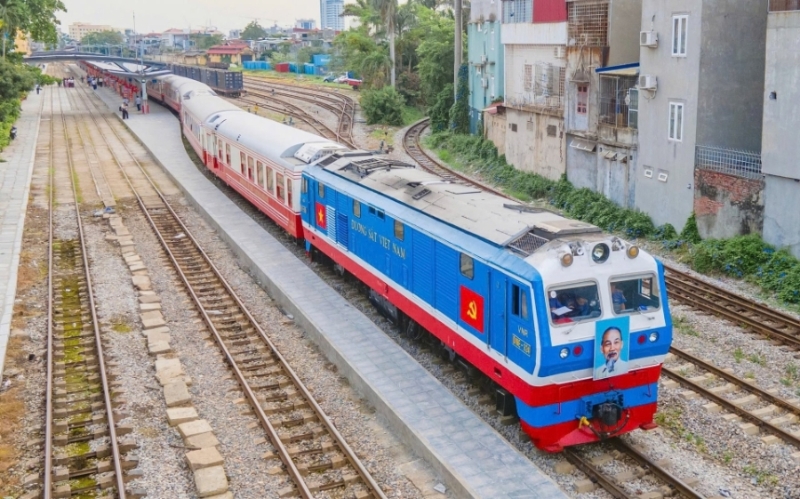Deputy Prime Minister Tran Hong Ha has signed Prime Ministerial Decision No. 2404/QD-TTg of October 29, 2025, approving adjustments to Vietnam’s railway network plan for the 2021–2030 period, with a vision to 2050.
Under the revised plan, the scope of two existing railway lines, namely Hanoi–Ho Chi Minh City and Hanoi–Lao Cai, will be adjusted. The Hanoi–Hai Phong line segment from Hai Phong Station to Chua Ve Port will be converted once Vat Cach Station is completed and put into operation.
Regarding new routes, the plan updates the name, scale, and investment roadmap of the projected North–South high-speed railway and adds a new project for Hanoi–Quang Ninh high-speed line.
The investment scales and roadmaps of the two other new lines, namely Hanoi - Lao Cai - Hai Phong and Ho Chi Minh City - Loc Ninh (in the former southern province of Binh Phuoc, now part of southern Dong Nai province), will be adjusted. Meanwhile, the investment roadmaps of three other projects, namely Hanoi - Dong Dang (in northern Lang Son province), Hai Phong - Ha Long - Mong Cai, and Thap Cham - Da Lat, will be also revised.
It also revises the scope and scale of seven other routes, including Yen Vien–Pha Lai–Ha Long–Cai Lan, the eastern ring line of Hanoi, Nam Dinh–Thai Binh–Hai Phong, Vung Ang–Mu Gia, Bien Hoa–Vung Tau, Ho Chi Minh City–Can Tho–Ca Mau, and Da Nang–Kon Tum–Gia Lai–Dak Lak–Dak Nong–Binh Phuoc.
The Thu Thiem–Long Thanh line will be removed from the national plan and converted into an urban railway, while a new An Binh–Sai Gon (Hoa Hung)–Tan Kien line will be added.
For international connectivity, the plan introduces a rail link to China via the Hai Phong–Ha Long–Mong Cai line, and a link to Cambodia through the Ho Chi Minh City–Tay Ninh route.
Additionally, the plan adjusts orientations for rail connections to key transport hubs, enhancing the overall efficiency of Vietnam’s future railway network.









 Google translate
Google translate